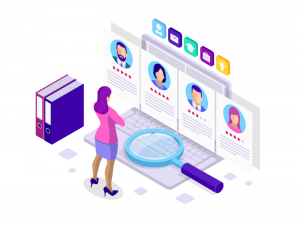Why lessons from loyalty marketing NEED to be taken into our talent strategies
 An integral part of my role is helping companies stand out to talent. In the past I’ve helped businesses fill the funnel and fuel their ‘infinity loop’. An observation is that more often than not, this work has always focused on generating more new names. More new talent. More new CVs. More new talent community members. Always. New.
An integral part of my role is helping companies stand out to talent. In the past I’ve helped businesses fill the funnel and fuel their ‘infinity loop’. An observation is that more often than not, this work has always focused on generating more new names. More new talent. More new CVs. More new talent community members. Always. New.
Over recent years, I have watched companies become more advanced in their marketing techniques to generate more new people into pipelines. But I think the recruitment funnel graphics have got it wrong. I learned earlier in my career that the transaction should not end at hire (let alone at application). Just like in consumer marketing the customer relationship doesn’t end at purchase. Consumer brands will stop at nothing to keep you from switching to another brand – They roll out points programs, loyalty cards, NPS and feedback loops and the like to make sure you continue to buy their products, and hopefully buy more of their products.
Of course, it remains important to attract new consumers just as much as it is important to develop new talent pipelines. But in brand marketing the key to growth is based on getting existing customers to buy more. They build marketing plans in parallel paths: one plan is to acquire new customers (switchers); the other path is getting their current customers to buy more.
Which is where we should be heading in our world of talent, too. Even today, with a global pandemic, high unemployment and brexit, two things remain true:
- Your employees are not engaged.
- People hate applying for jobs.
If we are focused on always new, ending our transaction at application or hire, how are we going to get our candidates and employees to engage? It’s time we infuse some lessons from loyalty marketing strategies into our talent strategy.
To be clear, we do not need people to buy more of our product. Our jobs are not products but there are lessons to be learned from this example. The key lesson involves understanding and studying what your employees want and need. It means that we must treat this audience differently.
My experience is that many existing internal mobility ‘efforts’ simply replicate the experience offered to external talent, failing to base this on what employees need or want. For example: Many people call posting a job on the intranet for 5 days before posting it on an external job board their internal mobility solution. Others will tell me that their solution is an internal job board for employees to search and apply for a job like anyone else. But the lack of visits and lack of internal applicants indicates no one wants this, and it doesn’t go far enough. Time and time again research shows that conversation rates for internal versus external is stark. To change this, we need to identify that our employees want a different experience. They want to be tapped on the shoulder for a new role based on their skills, goals, and experience. They want to have jobs that match their aspirations served up to them. They want to have meaningful career conversations. They are special, but more over they want to feel special. Perhaps you have spent thousands of pounds in hiring them with an agent, or on marketing fees and then time and money training them. You’ve imparted, and they have obtained invaluable institutional knowledge. But for some reason, once they’ve been hired, we tend to forget about them as viable talent to grow and cultivate. And when they leave, gah the admin headache and expense.
What if you spent some time and money on our loyalty strategy for your current talent? What if that effort was successful in thwarting off some other company’s switcher strategy? It’s time we evolve people practices to where our consumer marketing counterparts are. We need to develop parallel strategies to acquire new candidates while getting our current employees to elevate and advance. To get current employees to take on new roles and responsibilities.
This means finding ways to get our own employees to raise their hands when they are having a bad day, need new challenges, or are feeling wobbly about staying with us. We need to continue to court them and build that relationship, that loyalty. We need to show them that we can upgrade their career with something that may be a great fit for them tomorrow and for the foreseeable future. We need to get our A-players actively involved in conversations about their future with the company. And we need to make it EASY! In summary, we need to start developing a holistic view of our talent strategy.
If you would like any support in diversifying your company’s talent strategy to be sure you are creating the right opportunities for your current talent to stay; then please do get in touch on hello@HROptimisation.co.uk.

Hannah Powell

Tags In
Categories
- Coaching (9)
- CSR (1)
- Culture (1)
- Culture & Engagement (33)
- Diversity and Inclusion (16)
- Employment law (38)
- Inspiration (12)
- Leadership (14)
- Learning & Development (7)
- Recruitment (12)
- Reward (9)
- Self-development (2)
- Tips & tricks (11)
- Uncategorized (18)
- Welfare and Wellbeing (26)
